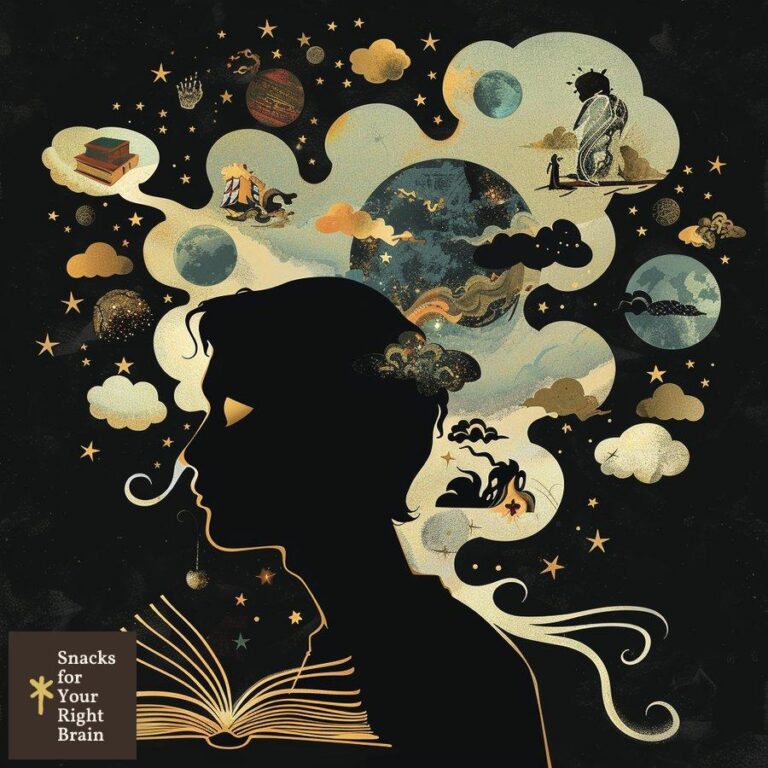What Is a Twist in a Short Story
What is a plot twist?
A plot twist is an unexpected, surprising, and often mind-bending turn of events that fundamentally alters the course of a story. It is a narrative device that challenges the reader’s assumptions, subverts their expectations, and adds an element of mystery and intrigue to the storytelling process. Plot twists can range from subtle revelations to dramatic, game-changing moments that leave readers reeling and eager to uncover more.

The element of surprise
The essence of a plot twist lies in its ability to surprise the reader. A well-crafted twist catches the audience off guard, forcing them to re-evaluate everything they thought they knew about the story and its characters. This element of surprise is what makes plot twists so engaging and memorable, as readers are compelled to go back and re-examine the narrative for clues and foreshadowing they may have missed the first time around.
Challenging assumptions
Plot twists challenge the reader’s assumptions by presenting information or events that contradict their expectations. This can be achieved through misdirection, where the writer deliberately leads the reader down a false path, or by introducing new information that casts the story in a completely different light. By challenging the reader’s assumptions, plot twists encourage critical thinking and active engagement with the narrative, as the audience is forced to question their own preconceptions and biases.
Subverting expectations
In addition to challenging assumptions, plot twists also subvert the reader’s expectations. Writers can achieve this by playing with genre conventions, character archetypes, and narrative structures. For example, a twist might involve a hero turning out to be a villain, or a story that appears to be a romance suddenly taking a dark, psychological turn. By subverting expectations, plot twists keep the reader on their toes and prevent the narrative from becoming predictable or formulaic.
Enhancing the storytelling experience
At their core, plot twists are a tool for enhancing the storytelling experience. They add depth, complexity, and intrigue to a narrative, making it more engaging and memorable for the reader. A well-executed twist can elevate a story from a simple sequence of events to a multilayered, thought-provoking exploration of themes, characters, and ideas. When used effectively, plot twists can transform a good story into a great one, leaving a lasting impression on the reader’s mind.
Why are plot twists important in storytelling?
Plot twists are an essential element of storytelling for several reasons:
-
They keep the reader engaged and invested in the story. By constantly challenging the reader’s expectations and introducing new surprises, plot twists prevent the narrative from becoming stale or predictable. This helps to maintain the reader’s interest and curiosity throughout the story.
-
They add depth and complexity to the narrative. Plot twists introduce new layers of meaning and interpretation to the story, encouraging the reader to think critically about the events and their implications. This depth can lead to a more satisfying and intellectually stimulating reading experience.
-
They allow for character development and exploration. Twists can reveal new facets of a character’s personality, motivations, and relationships. This can lead to a deeper understanding of the characters and their roles within the story.
-
They can be used to comment on social, political, or philosophical themes. By subverting expectations and challenging assumptions, plot twists can be used to explore complex ideas and issues in a thought-provoking way. This can make the story more relevant and impactful for the reader.
-
They create a sense of anticipation and excitement. The promise of a twist or surprise can keep the reader eagerly turning the pages, eager to discover what will happen next. This anticipation is a key part of the storytelling experience and can make the eventual twist even more impactful.
What are the different types of plot twists?
There are several different types of plot twists that writers can use to surprise and engage their readers:
Revelation twists
Revelation twists involve the sudden disclosure of important information that changes the reader’s understanding of the story. This can include:

- Revealing a character’s true identity or motivations
- Exposing a lie or deception that has been central to the plot
- Uncovering a hidden connection between characters or events
Reversal twists
Reversal twists involve a sudden and unexpected change in the direction of the story. This can include:
- A hero becoming a villain or vice versa
- A character making a choice that contradicts their established personality or values
- A story that appears to be heading in one direction suddenly taking a sharp turn
Ironic twists
Ironic twists involve a situation where the outcome is very different from what was expected or intended. This can include:
- A character’s actions having unintended consequences
- A character’s efforts to prevent a certain outcome actually causing it to happen
- A character’s assumptions about the world or other characters being proven wrong
Temporal twists
Temporal twists involve a manipulation of the story’s timeline, such as:
- Revealing that the story is actually a flashback or flash-forward
- Showing events out of chronological order to create a sense of mystery or confusion
- Introducing time travel or alternate timelines that change the course of the story
Thematic twists
Thematic twists involve a twist that is more conceptual or philosophical in nature, such as:
- A story that challenges the reader’s assumptions about morality or justice
- A twist that forces the reader to re-evaluate their own beliefs or values
- A story that explores the nature of reality, identity, or consciousness in a surprising way
These are just a few examples of the many types of plot twists that writers can use to surprise and engage their readers. The most effective twists often combine elements of several different types to create a truly memorable and impactful moment in the story.
How do you craft an effective plot twist?
Crafting an effective plot twist requires careful planning, foreshadowing, and execution. Here are some key considerations:
Establish a strong foundation
Before introducing a twist, it’s important to establish a strong foundation for the story. This means developing well-rounded characters, creating a clear and compelling narrative arc, and setting up the story’s themes and conflicts. Without this foundation, a twist can feel like a gimmick rather than an integral part of the story.
Foreshadow the twist
Effective plot twists are often foreshadowed throughout the story, with subtle clues and hints that point to the eventual revelation. This foreshadowing serves several purposes:
- It makes the twist feel more organic and believable rather than coming out of nowhere.
- It encourages the reader to re-examine the story for clues and foreshadowing they may have missed.
- It allows the writer to plant red herrings and misdirections to throw the reader off the scent.
Introduce the twist at the right moment
The timing of a plot twist is crucial. Ideally, the twist should be introduced at a point where it will have the maximum impact on the reader. This could be at the climax of the story, or it could be a revelation that sets the stage for the story’s final act. The twist should also be introduced in a way that creates a sense of inevitability, making the reader feel that they should have seen it coming all along.
Make the twist believable and logical
For a plot twist to be effective, it must be believable and logical within the context of the story. This means that the twist must be supported by the story’s established rules and conventions, and that it must be consistent with the characters’ personalities and motivations. A twist that feels like a cheap gimmick or a deus ex machina will ultimately fall flat with the reader.
Explore the implications of the twist
Once the twist has been introduced, it’s important to explore its implications for the story and its characters. How does the twist change the reader’s understanding of the story? What new questions or conflicts does it introduce? By exploring these implications, the writer can deepen the reader’s engagement with the story and create a more satisfying and thought-provoking reading experience.
Avoid common pitfalls
When crafting a plot twist, it’s important to avoid common pitfalls such as:
- Introducing the twist too early or too late in the story
- Relying on coincidence or contrivance to set up the twist
- Failing to foreshadow the twist or provide sufficient clues
- Introducing a twist that contradicts the story’s established rules or conventions
- Failing to explore the implications of the twist or leaving the reader with unanswered questions
By avoiding these pitfalls and following the principles outlined above, writers can craft effective and impactful plot twists that keep readers engaged and entertained from start to finish.
What are some famous examples of plot twists?

Some of the most famous and memorable plot twists in literature and film include:
The Sixth Sense (1999)
In this psychological thriller directed by M. Night Shyamalan, the twist ending reveals that the protagonist, child psychologist Dr. Malcolm Crowe (played by Bruce Willis), has been dead the entire time, and that he has been communicating with a young boy named Cole (Haley Joel Osment) who can see and talk to ghosts. The twist is foreshadowed throughout the film, but it still manages to surprise and shock the audience.
Fight Club (1999)
In this cult classic directed by David Fincher, the twist ending reveals that the narrator (played by Edward Norton) and Tyler Durden (Brad Pitt) are actually the same person, and that Tyler is a figment of the narrator’s imagination. The twist is supported by clues and foreshadowing throughout the film, and it forces the audience to re-evaluate everything they thought they knew about the story and its characters.
The Usual Suspects (1995)
In this crime thriller directed by Bryan Singer, the twist ending reveals that the seemingly harmless con man Verbal Kint (Kevin Spacey) is actually the notorious criminal mastermind Keyser Söze. The twist is supported by a series of flashbacks that gradually reveal the truth, and it leaves the audience questioning everything they thought they knew about the story and its characters.
Shutter Island (2010)
In this psychological thriller directed by Martin Scorsese, the twist ending reveals that the protagonist, U.S. Marshal Teddy Daniels (Leonardo DiCaprio), is actually a patient at the mental institution he is investigating, and that his entire investigation is a delusion. The twist is supported by clues and foreshadowing throughout the film, and it forces the audience to re-evaluate everything they thought they knew about the story and its characters.
The Empire Strikes Back (1980)
In this classic science fiction film directed by Irvin Kershner, the twist ending reveals that Darth Vader is actually Luke Skywalker’s father. The twist is a shocking revelation that changes the course of the story and sets up the events of the final film in the original trilogy. It is a twist that has become iconic in popular culture and has been parodied and referenced countless times.
These are just a few examples of the many famous and memorable plot twists in literature and film. Each twist is unique in its execution and impact, but they all share the common goal of surprising and engaging the audience in a way that enhances the storytelling experience.
What common pitfalls should you avoid when writing plot twists?
When writing plot twists, there are several common pitfalls that writers should avoid in order to create an effective and impactful twist:

Introducing the twist too early or too late
If a twist is introduced too early in the story, it can feel like a gimmick or a cheap trick to keep the reader engaged. On the other hand, if a twist is introduced too late in the story, it can feel rushed and unsatisfying. The ideal timing for a twist is at a point where it will have the maximum impact on the reader and the story.
Relying on coincidence or contrivance
A twist should feel organic and believable within the context of the story. If a twist relies too heavily on coincidence or contrivance to set up the reveal, it can feel forced and unnatural. Writers should strive to create a twist that is supported by the story’s established rules and conventions.
Failing to foreshadow the twist
Effective plot twists are often foreshadowed throughout the story, with subtle clues and hints that point to the eventual revelation. If a twist comes out of nowhere without any foreshadowing, it can feel like a deus ex machina and leave the reader feeling cheated or confused. Writers should plant clues and red herrings throughout the story to keep the reader engaged and guessing.
Introducing a twist that contradicts the story’s established rules
For a twist to be effective, it must be consistent with the story’s established rules and conventions. If a twist introduces new information or events that contradict what has come before, it can feel like a betrayal of the reader’s trust. Writers should ensure that their twists are supported by the story’s internal logic and that they don’t introduce any inconsistencies or plot holes.
Failing to explore the implications of the twist
Once a twist has been introduced, it’s important for writers to explore its implications for the story and its characters. If a twist is introduced and then left unexamined, it can feel like a missed opportunity to deepen the reader’s engagement with the story. Writers should take the time to explore how the twist changes the reader’s understanding of the story and what new questions or conflicts it introduces.
Overusing twists
While plot twists can be an effective tool for keeping readers engaged and entertained, overusing them can lead to a sense of gimmickry and predictability. If every story is filled with twist after twist, the reader can become desensitized to the surprise and start to anticipate the next twist rather than engaging with the story itself. Writers should use twists sparingly and only when they serve a clear narrative purpose.
By avoiding these common pitfalls and focusing on creating a twist that is well-timed, believable, and impactful, writers can craft effective and memorable plot twists that enhance the storytelling experience for their readers.





